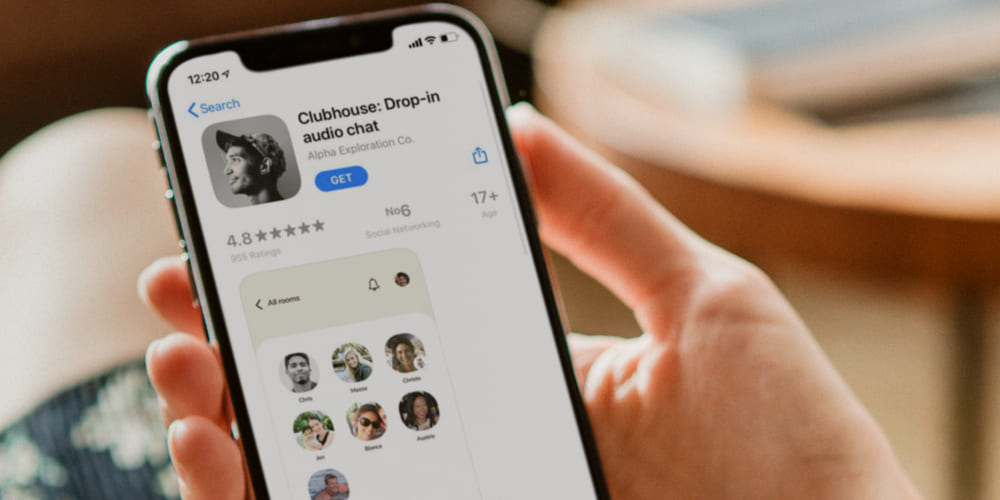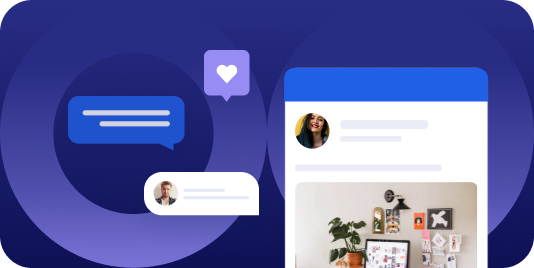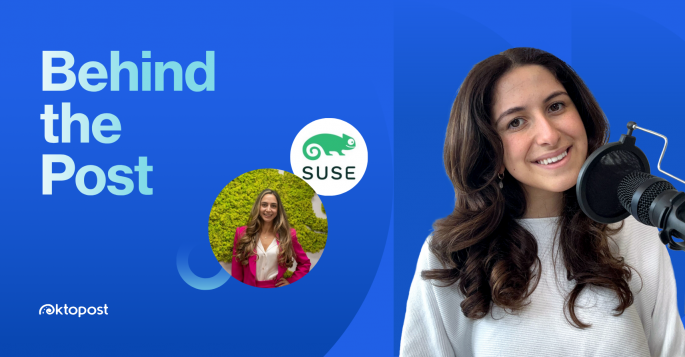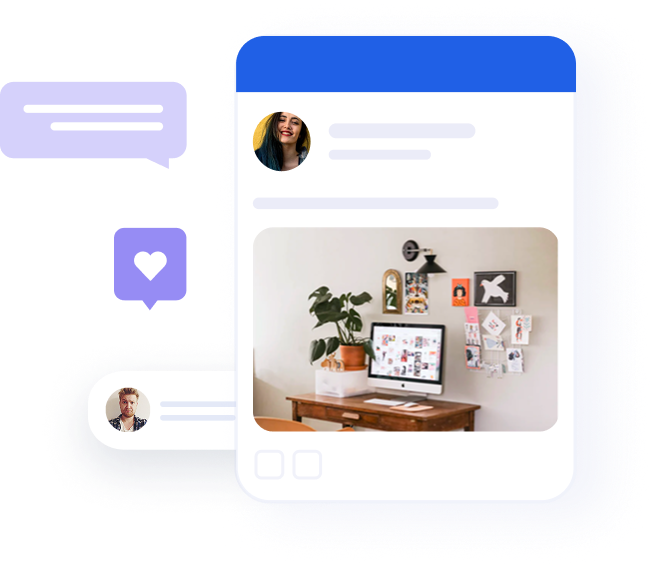
Clubhouse: What’s in it for B2B brands?
Table of contents
There’s a new app taking social media circles by storm and if you’ve seen it mentioned in your feeds, you may be wondering, “WTF is Clubhouse?”
Well, consider today your lucky day because Spotler UK‘s Senior Marketing Executive, Richard Wall, joined me on a social media workshop to explain everything you need to know so far about the Clubhouse app and what’s in it for B2B Brands in this quick on-demand conversation.
What is clubhouse?
Developed by Silicon Valley entrepreneur Paul Davison and ex-Google employee Rohan Seth, Clubhouse is an exclusive invite-only, audio-chat based app, which is part talkback radio, part conference call and part Houseparty.
Users of the app can listen in to conversations, interviews and discussions between interesting people on various topics– think podcast, but live with the option of contributing to the conversation.
Who is clubhouse for?
The cliche answer is everyone with an iPhone (for now!). But on a serious note, it’s for people who want to learn, grow and connect with others around the world.
The app is focused on learning from others, sharing experiences and creating meaningful connections with people who share similar interests.
Recommended for further reading
What’s in it for B2B brands?
If you’ve got this far, you probably think it has some major potential for B2B brands. While the app is still new and we are still learning, Richard and I see the following ways B2B brands can jump on the Clubhouse bandwagon:
Making connections
This is what social apps are made for!
Most rooms are topic-based: email marketing, public speaking, content marketing, etc. So finding experts in these areas is baked in and not based on who you already know (like LinkedIn, for example)
Connecting does take some effort; the only functionality in-app is to follow someone, so you know when they are in a room.
Brand building
Frank conversations help people really understand your brand. As “Human-2-Human” marketing becomes increasingly important, allowing the people behind the brand to join conversations is a powerful tool.
The majority of your employees have very little opportunity to have unstructured conversations about the company, especially since there have been few trade shows and conferences in the last 12 months.
Social selling & employee advocacy
On Clubhouse, you aren’t tied to your employer brand in the same way as you are on LinkedIn or at an event. In fact, you can develop your own voice and advocate for where you work.
In the digital age, 42% of B2B buyers distrust brands – and their distrust is growing stronger and stronger every day. So using your biggest form of support, aka your employees on Clubhouse, may be helpful in a B2B strategy.
Often, the best way to understand your company’s position and offering is to answer questions from genuinely curious outsiders. Clubhouse can be a great space to better understand your perfect buyer.
The caveat here is that as an employer, you have to be comfortable giving employees that freedom. Tight reins will strangle!
Growing other channels
The great thing about Clubhouse is it’s all about creating meaningful conversations. However, when the conversation ends, many may want to continue the discussion or look up more information about the moderators, speakers and audience members.
By adding in your BIO where people can find out more about you or where you work, B2B organizations can use this as a way to grow other channels, like LinkedIn, Twitter, or Facebook, by directing their Clubhouse following elsewhere to learn more.
Internal teams
Running rooms with your colleagues is a good way to understand all the functionality and lingo; like any network, it has its own foibles.
Some people find it easier to speak up when they aren’t on camera, which can lead to interesting discussions.
Perhaps Clubhouse is becoming the new water cooler. It’s easy for people to jump in and out (once you’re on Clubhouse, you don’t need invites to specific chats; conversations have no time limit).
Standing out
Right now, it’s not a busy space – according to a poll Richard saw on LinkedIn last week, 35% of people haven’t heard of it.
Being in a space where your competitors aren’t means you own it – 100% share of voice.
Understanding the clubhouse app lingo
Similar to corporate lingo, when you’re using the Clubhouse app there’s quite a bit of Clubhouse language to learn and master. Whether you’re listening in the audience or moderating a room, the lingo may initially be confusing. So here’s a little language guide to get you started:
Roles
- Audience: everyone listening to the conversation (on mute!)
- Moderators control the conversation inside a room. They are similar to room admins and are marked with a green star next to their names. An important note: all moderators have the same amount of power, so make sure you know the people you are granting moderator status.
- Speaker: anyone in the “room” that has been brought up to the stage. An unmuted microphone will be shown on the right portion of that person’s profile image.
More lingo
- Clubs: Groups you can follow or join/be notified when discussions are taking place on that specific topic
- Hallway: the main landing page of the app, which suggests which clubs and rooms you may be interested in
- Rooms: These are the spaces where the conversations take place. You can think of them as mini-conference rooms.
- Stage: the section of the room where anyone can speak. If you are a moderator, you are automatically on the stage, and it’s the moderator’s role to bring speakers or audience members “to the stage” to speak.
- Party Hat: This emoji lets other users know you’re new to the app! It appears on your name in the 1st seven days you are on the app.
- PTR: Acronym for “Pull to Refresh” (refreshing the page to see new suggestions and update the room)
- Waitlist: You can sign up for the waitlist and wait for a friend to “waive” you!
- Town Hall: This event occurs once a week on Sunday at 5 p.m. GNT. Inside this room, you will find the founders of the Clubhouse App. Here, they take questions and share updates that are soon to be released.
Common phrases
- “Resetting the Room“: the art of re-introducing the speakers and topic for anyone joining the room midway through and keeping the conversation focused. As a best practice, it’s suggested to “reset the room” about 10 – 12 minutes after the start and then again every 30 minutes to an hour.
- “Ask a question or make a contribution”: a common phrase used by moderators to indicate a new speaker is coming to the stage.
- “Dropping Gems”: a common phrase used by moderators and speakers when they’ve learned something incredible or new.
- “Pass the mic”: a popular way by moderators or speakers to welcome the next speaker in line to speak.
Got questions?
Hopefully, this covers the basics, and we’re excited to learn alongside you! For more discussion, follow me (@jengutman) or Richard Wall (@brickinthewall) on Clubhouse, where we will be opening rooms to discuss more about what’s in it for B2B brands.
This article was co-authored by Oktopost‘s Director of Social Strategy, Jennifer Gutman, and Spotler UK‘s Senior Marketing Executive, Richard Wall.




